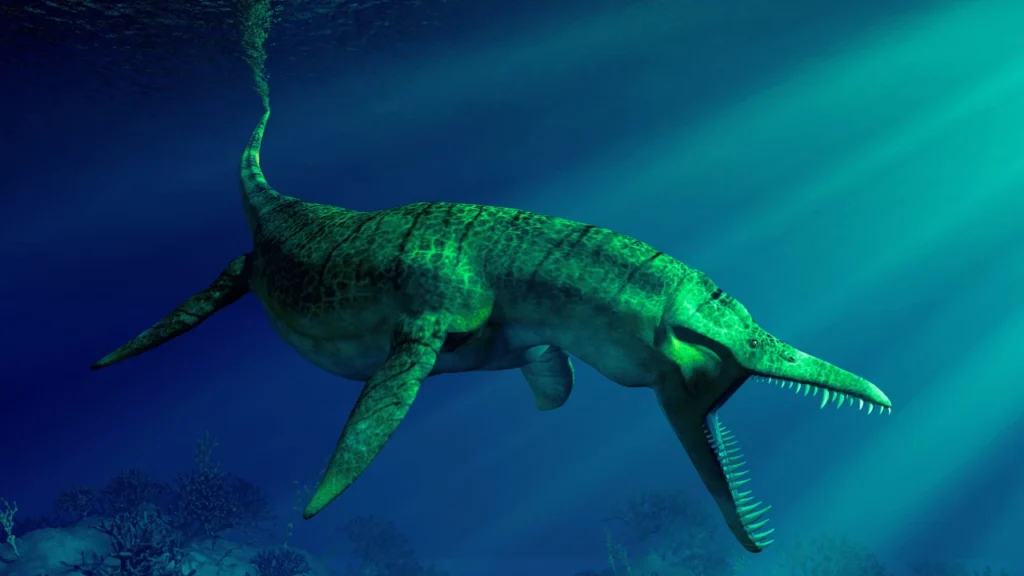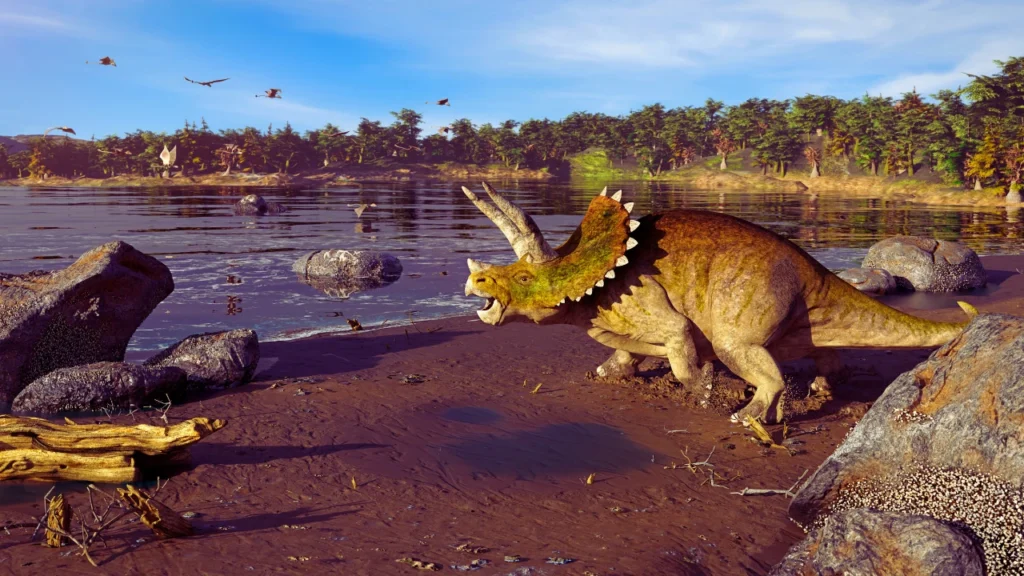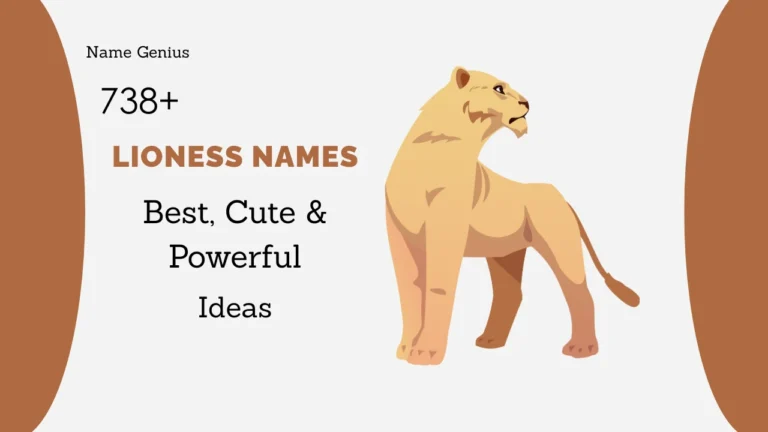129+ Cool and Real Water Dinosaur Names (With Pictures & Fun Facts)
Water dinosaur names evoke images of colossal beasts ruling ancient oceans. While these magnificent creatures lived in the water, it’s important to remember that many were not technically dinosaurs in the scientific sense; they were formidable prehistoric marine reptiles like the mighty Mosasaurus and the long-necked Plesiosaurus.
Water dinosaur names are deeply ingrained in our collective imagination, thanks to their prominent role in pop culture, blockbuster films, and captivating museum exhibits. These aquatic dinosaur names represent a diverse group of predators that dominated the seas during the Mesozoic Era, alongside their land-dwelling counterparts.
Water dinosaur names continue to fascinate scientists and enthusiasts alike, offering a glimpse into a bygone era when the Earth’s oceans teemed with incredible life forms. To delve deeper into the world of these ancient mariners, you can explore resources from National Geographic, the Natural History Museum, and Wikipedia’s guide to Marine Reptiles.

Key Facts About Water Dinosaurs
| Feature | Description |
| Common Name | Marine Reptiles / “Water Dinosaurs” |
| Real Groups | Plesiosaurs, Ichthyosaurs, Mosasaurs |
| Era | Triassic to Cretaceous (~250–66 million years ago) |
| Habitat | Oceans, seas, coastal waters |
| Size Range | 3 ft to over 50 ft |
| Diet | Mostly carnivorous (fish, ammonites, other reptiles) |
| Fun Fact | Mosasaurus could grow up to 50 feet long |
| Common Confusion | They’re not true dinosaurs, but lived at the same time |
Most Famous Water Dinosaur Names
When we think of water dinosaur names, certain iconic creatures immediately spring to mind. These are the giants and predators that have captured our imaginations and frequently appear in films, documentaries, and museum displays, solidifying their place as the most recognizable ancient marine reptiles.
These famous water dinosaur names represent some of the most formidable and fascinating inhabitants of the prehistoric oceans. Their appearances in media have introduced them to a wide audience, making them household names even though they are technically marine reptiles and not true dinosaurs.
| Mosasaurus | Plesiosaurus | Ichthyosaurus |
| Kronosaurus | Elasmosaurus | Liopleurodon |
| Tylosaurus | Shonisaurus | Cryptoclidus |
| Dakosaurus | Cymbospondylus | Ophthalmosaurus |
| Prognathodon | Styxosaurus | Pliosaurus |
| Platypterygius | Dolichorhynchops | Temnodontosaurus |
| Geosaurus | Hydrarchos | Thalattoarchon |
| Mauisaurus | Nothosaurus | Placodus |
| Attenborosaurus | Trinacromerum | Mystriosaurus |
| Muraenosaurus | Terminonatator | Hydrotherosaurus |
| Polyptychodon | Rhomaleosaurus | Metriorhynchus |
| Hauffiosaurus | Leptocleidus | Macroplata |
Real Aquatic Dinosaur Names
While the term “water dinosaur” is commonly used, it’s crucial to understand that the scientifically accurate real aquatic dinosaur names refer to marine reptiles. These incredible creatures adapted to life in the water during the same era as true dinosaurs, evolving unique features that allowed them to thrive in ancient oceans.
These real aquatic dinosaur names represent a diverse array of marine reptiles, each with its own fascinating adaptations and history. They highlight the incredible biodiversity of the Mesozoic seas, showcasing how life found countless ways to flourish in aquatic environments.
| Mosasaurus | Plesiosaurus | Ichthyosaurus |
| Kronosaurus | Elasmosaurus | Liopleurodon |
| Tylosaurus | Shonisaurus | Cryptoclidus |
| Dakosaurus | Cymbospondylus | Ophthalmosaurus |
| Prognathodon | Styxosaurus | Pliosaurus |
| Platypterygius | Dolichorhynchops | Temnodontosaurus |
| Geosaurus | Hydrarchos | Thalattoarchon |
| Mauisaurus | Nothosaurus | Placodus |
| Attenborosaurus | Trinacromerum | Mystriosaurus |
| Muraenosaurus | Terminonatator | Hydrotherosaurus |
| Polyptychodon | Rhomaleosaurus | Metriorhynchus |
| Hauffiosaurus | Leptocleidus | Macroplata |

Funny and Creative Water Dinosaur Names
Sometimes, you need water dinosaur names that are a bit more whimsical, whether for a pet, a toy, or a character in a story. These funny and creative names offer a playful twist on the prehistoric inhabitants of the deep, perfect for sparking imagination and bringing a smile.
These imaginative water dinosaur names are ideal for adding a touch of humor or uniqueness to your creative projects. They combine sounds and concepts related to water and dinosaurs, resulting in memorable and fun names.
| Splashzilla | Bubblerex | Finny Saurus |
| Gilledzilla | Aqua-raptor | Wave Chomper |
| Ocean-Rex | Depth Diver | Scale-o-saurus |
| River Ripper | Sea Serpent | Tide Hunter |
| Moby Dick-o | Gulp-adon | Fin-tastic |
| Puddle Prowler | Reef Reaper | Current King |
| Briny Beast | Lagoon Lord | Gilligan |
| Water Wrecker | Bubble Belly | Salty Sam |
| Wet Willie | Hydro-Hunter | Finny-Doo |
| Deep Dive Dave | Aqua Ace | Ocean Ogre |
| Stream Stomper | Pond Pounder | Mighty Marlin |
| Ripple Rider | Kelp Crusher | Current Chomper |
Water Dinosaur Names for Kids
Choosing water dinosaur names for kids means finding options that are easy to say, memorable, and often a little bit cute or exciting. These names are perfect for sparking a child’s imagination, whether for playtime with toy dinosaurs, creating stories, or simply learning about these incredible ancient creatures.
These kid-friendly water dinosaur names blend real scientific names with fun, imaginative options, making them accessible and engaging for young learners and enthusiasts. They encourage curiosity about the prehistoric world in an approachable way.
| Swimmy | Munch | Sheller |
| Finny | Ripples | Splash |
| Aqua | Chompy | Bubbles |
| Wavy | Snapper | Deep Blue |
| Gill | Rexy | Dino-Fish |
| Flippy | Scales | Puddles |
| Hunter | Skipper | Sea Star |
| Tide | Ocean | Gulp |
| Fin-tastic | Water Wanderer | River Rex |
| Little Loppy | Big Bite | Speedy Swim |
| Mighty Mouth | Fin-derella | Aqua-Buddy |
| Stumpy | Tail Swish | Bubbler |

Sea Dinosaur Names A to Z
This alphabetical list of sea dinosaur names provides a comprehensive resource for anyone looking to explore the vast array of ancient marine reptiles. Whether for educational purposes, writing projects, or simply satisfying curiosity, this A to Z guide includes both scientifically recognized names and imaginative, fantasy-inspired aquatic options.
This comprehensive list of sea dinosaur names serves as an excellent reference, helping to categorize and discover the many fascinating creatures that once roamed the ancient oceans. It’s designed to assist kids, writers, educators, and anyone with an interest in prehistoric marine life.
| Aigialosaurus | Brachauchenius | Cylindracanthus |
| Dakosaurus | Elasmosaurus | Futabasaurus |
| Geosaurus | Hydrotherosaurus | Ichthyosaurus |
| Kronosaurus | Liopleurodon | Mosasaurus |
| Nothosaurus | Ophthalmosaurus | Plesiosaurus |
| Queenslandella | Rhomaleosaurus | Styxosaurus |
| Thalattoarchon | Undorosaurus | Ventnoraptor |
| Woolungasaurus | Xenodens | Yuzhouplatys |
| Zarafasaura | Apatosaurus Aquaticus | Bubble-Beast |
| Crested Crawler | Deep Lurker | Fin-o-saur |
| Gilled Goliath | Hydrosaurus | Ocean Giant |
| Pliosaur Prime | River Serpent | Sea Monster Rex |
Differences Between Water Dinosaurs and Dinosaurs
It’s a common misconception that all large, prehistoric reptiles were dinosaurs. When discussing water dinosaur names, it’s essential to clarify the scientific distinctions between true dinosaurs and the marine reptiles that inhabited ancient oceans. While they lived concurrently during the Mesozoic Era, they belonged to different taxonomic groups.
True dinosaurs were primarily terrestrial animals, characterized by specific hip and limb structures that allowed them to walk upright on land. Marine reptiles, on the other hand, adapted to aquatic life, evolving flippers, streamlined bodies, and other features ideal for swimming. This distinction is crucial for accurate scientific understanding.
Key differences include:
- Classification: Dinosaurs belong to the superorder Dinosauria. Marine reptiles, like Plesiosaurs, Mosasaurs, and Ichthyosaurs, belong to various other reptilian orders (e.g., Plesiosauria, Mosasauridae, Ichthyosauria), which are separate from Dinosauria.
- Habitat: Dinosaurs were predominantly land-dwelling, though some may have frequented aquatic environments. Marine reptiles lived exclusively or primarily in the oceans, seas, and sometimes freshwater bodies.
- Locomotion: Dinosaurs moved on legs, either bipedally or quadrupedally. Marine reptiles used flippers or paddles for propulsion through water, often with powerful tails.
- Breathing: Both groups breathed air, but marine reptiles would surface regularly to breathe, similar to modern whales and dolphins.
Giant Water Dinosaurs That Ruled the Seas
The ancient oceans were home to truly colossal predators, making their water dinosaur names synonymous with immense size and power. These giant marine reptiles were the apex predators of their time, dominating the marine food chains and instilling fear in anything that crossed their path.
Focusing on the size and sheer power of these magnificent creatures helps us appreciate the scale of life in the prehistoric oceans. These giant water dinosaurs were unparalleled in their aquatic environments, showcasing the incredible diversity and evolution of marine life.
Here are some of the titans of the deep:
- Mosasaurus: Reaching lengths of up to 50 feet (15 meters), Mosasaurus was an agile and powerful predator with a long, cylindrical body, a paddle-like tail, and jaws lined with razor-sharp teeth. Its size made it one of the top predators of the late Cretaceous period.
- Tylosaurus: A type of mosasaur, Tylosaurus could grow even larger, sometimes exceeding 50 feet. It was known for its elongated snout and robust build, perfectly suited for hunting large prey like sharks and other marine reptiles.
- Shonisaurus: This was one of the largest ichthyosaurs, potentially reaching lengths of over 50 feet (15 meters). Unlike the predatory mosasaurs, Shonisaurus was likely a filter feeder, using its toothless jaws to consume soft-bodied prey.
- Kronosaurus: A massive pliosaur, Kronosaurus was a short-necked, large-headed marine reptile that could grow up to 33 feet (10 meters) long. Its powerful jaws and conical teeth were designed for crushing bones and tearing flesh, making it a formidable hunter of other marine reptiles and large fish.
- Liopleurodon: Though often exaggerated in popular culture, Liopleurodon was still a significant predator, estimated to be around 20-25 feet (6-7 meters) long. As a pliosaur, it possessed a massive head and powerful jaws, making it an efficient hunter.
Prehistoric Sea Creatures vs. Today’s Marine Life
Comparing water dinosaur names and the creatures they represent with today’s marine life offers a fascinating look at the evolution of aquatic ecosystems. While marine reptiles like Mosasaurs, Plesiosaurs, and Ichthyosaurs dominated the prehistoric seas, their roles have since been filled by different, yet equally impressive, groups of animals. This comparison is particularly useful for educational readers and homeschoolers looking to understand continuity and change in Earth’s oceans.
| Feature | Prehistoric Marine Reptiles | Today’s Marine Life |
| Dominant Predators | Mosasaurs, Plesiosaurs, Ichthyosaurs | Whales (Orcas, Sperm Whales), Sharks (Great White) |
| Body Plan | Often elongated, flippered, streamlined | Diverse; some streamlined (sharks), some massive (whales) |
| Locomotion | Flippers, powerful tails; undulatory swimming | Fins, tails; diverse swimming styles (oscillation, undulation) |
| Diet | Fish, ammonites, other marine reptiles, large prey | Fish, plankton, smaller marine mammals, seals, krill |
| Reproduction | Largely live-bearing (some ovoviviparous) | Diverse; live-bearing (mammals), egg-laying (fish, some reptiles) |
| Examples | Mosasaurus, Ichthyosaurus, Plesiosaurus, Kronosaurus | Whales, Sharks, Sea Turtles, Dolphins, Tuna |
Similarities and Differences:
- Ecological Niches: Both prehistoric marine reptiles and modern marine predators occupy similar ecological niches as apex predators, controlling populations of smaller organisms.
- Adaptations for Water: Both groups exhibit incredible adaptations for life in water, including streamlined bodies, specialized limbs (flippers vs. fins), and efficient respiratory systems.
- Warm-blooded vs. Cold-blooded: Most prehistoric marine reptiles were likely ectothermic (cold-blooded), relying on external heat sources. Modern marine mammals are endothermic (warm-blooded), maintaining a constant body temperature. Sharks are also ectothermic, though some exhibit regional endothermy.
- Reproductive Strategies: While many marine reptiles were viviparous (gave birth to live young), modern marine life has a broader range of reproductive strategies, including egg-laying fish and sea turtles, and live-bearing mammals.
Conclusion
The world of water dinosaur names opens the door to a thrilling chapter of Earth’s ancient history, filled with massive marine reptiles that once ruled the seas. Whether you’re naming a toy, writing a story, or simply fascinated by prehistoric life, these aquatic giants like Plesiosaurus and Mosasaurus continue to captivate imaginations worldwide.
If you’re eager to explore more prehistoric naming inspiration, don’t miss our complete list of 100 Dinosaur Names featuring land-based legends. For something more lighthearted, check out our collection of Funny Dinosaur Names. Prefer creatures that soared through the skies? You’ll love our curated Flying Dinosaur Names. Or explore the record-breaking Longest Dinosaur Names that challenge your pronunciation skills. And for everything in one place, browse our full Dinosaur Names hub.
From sea to sky to land, the world of dinosaurs is full of awe-inspiring names just waiting to be discovered.
FAQs About Water Dinosaur Names
Are water dinosaurs real dinosaurs?
No, marine reptiles like Mosasaurs and Plesiosaurs lived alongside dinosaurs but aren’t technically classified as dinosaurs. True dinosaurs were primarily land-based.
What is the most famous water dinosaur?
Mosasaurus is widely considered the most famous, especially after its prominent role in the Jurassic World movie series, showcasing its immense size and predatory prowess.
Did any dinosaurs live underwater?
True dinosaurs were mostly land-based. However, some, like Spinosaurus, adapted to semi-aquatic environments, living near or in water bodies for hunting, but they were not exclusively underwater dwellers.
What are good water dinosaur names for pets or toys?
Names like “Splashy,” “Wavefang,” “SeaRex,” “Finny,” or “Bubblerex” are fun and fitting for pets, games, and toys, blending aquatic themes with a touch of prehistoric charm.
Where can I see real water dinosaur fossils?
You can see real marine reptile fossils at many major natural history museums around the world, such as the Natural History Museum in London, the Smithsonian Institution in Washington D.C., and the American Museum of Natural History in New York.






